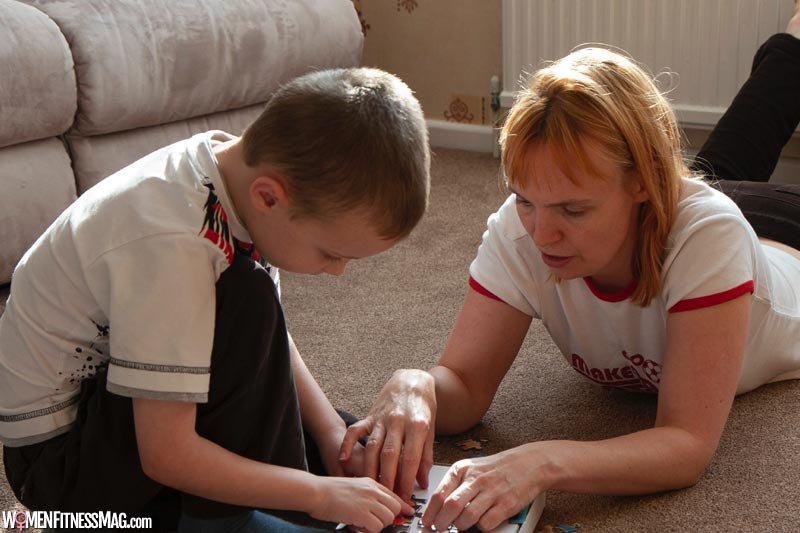Understanding and Treating Language Disorders in Children : Words have the power to inspire, entertain, and educate, but what happens when a child struggles to find them? Language disorders can impact a child’s ability to communicate, express themselves, and navigate their world.
Choose from our experts of Speech Pathologist to explore the complexities of language development in children and how we can help them find their voice.
Definition
A language disorder is a complex neurodevelopmental condition that hinders a person’s ability to understand, use or create language. It affects speech, grammar, and social communication and may be caused by genetic, developmental, or environmental factors. Support from experts at CSP and early intervention can significantly enhance communication skills.
Importance of identifying and treating Language Disorders in children
The beauty of language lies in its ability to connect and inspire, to weave stories and share emotions. However, these connections may be limited for children with this type of disorder, stifling their creativity and emotional expression. Identifying and treating this disorder is crucial to help these children unlock their full potential, improve academic and social skills, and build confidence. With early intervention, support, and patience, we can give them the gift of language, allowing them to express themselves and connect with others in a world of endless possibilities.
Types of Language Disorders
There are three main types of Language Disorders:
- Expressive Disorder: Children have difficulty expressing their thoughts and ideas through spoken or written language. They may have a limited vocabulary, struggle with grammar and syntax, and need help forming sentences. They may also need help with social communication, such as initiating or maintaining conversations.
- Receptive Disorder: Children have difficulty understanding and processing spoken or written language. They may need help to follow directions, respond appropriately to questions, or comprehend stories or conversations. They may need help with vocabulary and syntax and may also need help with social communication.
- Mixed Receptive-Expressive Disorder: Children struggle to express themselves and understand others. They may have trouble with grammar and vocabulary, struggle to form complete sentences, and have difficulty processing and comprehending spoken or written language. Social communication may also be impacted. It is important to note that this disorder can occur on a spectrum and may vary in severity and complexity.
Each child’s specific symptoms and needs will determine the best course of treatment.
Signs and symptoms

The signs and symptoms of this disorder in children can vary depending on the type and severity of the disorder. Here are some common signs to look out for:
- Delayed speech development: The child may not start speaking as early as other children, or they may have a limited vocabulary for their age.
- Difficulty understanding and following instructions: The child may need help understanding spoken or written language, which can make it challenging to follow instructions or complete tasks.
- Limited vocabulary: The child may have difficulty learning and using new words, which can impact their communication ability.
- Poor grammar and syntax: The child may need help with grammar and sentence structure, making it challenging to express themselves clearly.
- Inability to initiate or maintain conversations: The child may struggle with social communication, including creating and keeping conversations with peers or adults.
- Frustration or anxiety: It can cause frustration, anxiety, and emotional distress, particularly if the child struggles to communicate effectively.
Suppose you notice any of these signs or symptoms. In that case, it is essential to seek an evaluation from a speech-language pathologist or another qualified professional to determine the appropriate course of treatment. Early intervention can significantly improve outcomes for children with this ailment.
Causes
There are several potential causes of this disorder in children, including:
- Genetic factors: Some disorders may have a genetic component, which can be passed down through families.
- Brain injury or developmental delays: It may be caused by a brain injury, such as a traumatic brain injury, stroke, or developmental delays that impact language development.
- Environmental factors: Exposure to environmental toxins, such as lead, or lack of exposure to language-rich environments can also impact language development.
- Chronic ear infections: Frequent ear infections can lead to hearing loss, impacting a child’s ability to understand and process language.
- Neurological disorders: Some neurological disorders, such as autism spectrum disorder, attention-deficit/hyperactivity disorder (ADHD), or cerebral palsy, can also impact language development.
It is important to note that the cause of this disorder is unknown in many cases. However, identifying potential causes can help develop appropriate treatment plans and support for children with this ailment.
Diagnosis and Treatment

Diagnosing and treating requires a team approach involving speech-language pathologists, pediatricians, psychologists, and other professionals. Here are some steps involved in the diagnosis and treatment of this problem:
- Evaluation: A comprehensive assessment is usually the first step in diagnosing a Language Disorder. This may include a medical history review, observations of the child’s communication skills, standardized language assessments, and hearing tests.
- Individualized treatment plan: Once the disorder is diagnosed, an individualized treatment plan will be developed based on the child’s specific needs. This may include speech therapy, occupational therapy, or other interventions.
- Therapy: Speech therapy is the most common treatment and may involve one-on-one or group sessions with a speech-language pathologist. Therapy may focus on improving specific language skills, such as grammar, syntax, vocabulary, and social communication.
- Parental involvement: Parents play a critical role in their child’s treatment and typically receive guidance on supporting language development at home. They may also participate in therapy sessions and receive feedback on their child’s progress.
- Progress monitoring: Progress should be monitored regularly to determine the effectiveness of the treatment plan and make any necessary adjustments.
- Ongoing support: Some children may require ongoing support, even after therapy. Support may include accommodations in the classroom, continued speech therapy, and/or counseling services.
In summary, diagnosis and treatment involve a thorough evaluation, development of an individualized treatment plan, therapy, parental involvement, progress monitoring, and ongoing support.
How can you support children with Language Disorders?

Supporting children with this problem requires a team approach involving parents, educators, and other professionals. Here are some strategies for supporting children with this disorder:
- Create a supportive environment: Create a supportive and inclusive environment that fosters the child’s language development. Provide opportunities for the child to practice their communication skills and provide positive reinforcement for their efforts.
- Encourage language-rich activities: Encourage language-rich activities, such as reading, singing, and playing games that involve communication. These activities can help the child build their vocabulary, develop social communication skills, and improve their ability to express themselves.
- Provide accommodations in the classroom: Collaborate with the child’s teacher to provide accommodations in the school, such as extra time for assignments, assistive technology, and access to a speech-language pathologist or other support staff.
- Collaborate with professionals: Collaborate with speech-language pathologists, pediatricians, psychologists, and other professionals to ensure that the child receives the appropriate interventions and support.
- Set realistic goals: Set realistic goals for the child’s language development, and monitor progress regularly to determine if the interventions are effective.
- Advocate for the child: Advocate for the child’s needs, and ensure that they receive the appropriate accommodations and support in all aspects of their life.
- Provide emotional support: Provide emotional support to the child, and ensure they feel valued and supported as they improve their communication skills.
Conclusion
This ailment in children can be daunting, but early intervention and support can help them overcome communication barriers. Children can unlock their potential and thrive by fostering a supportive environment, promoting language-rich activities, and collaborating with professionals.
It is essential to provide ongoing support, empathy, and advocacy to help these children feel empowered, valued, and heard. With the right tools and resources, children with this disorder can find their voice, connect with others, and discover the limitless possibilities of effective communication.
Related Videos about Understanding and Treating Language Disorders in Children :
Understanding and Treating Language Disorders in Children
child language disorders examples, expressive language disorder, types of language disorders, language disorder treatment, receptive language disorder, child language disorders asha, developmental language disorder, types of language disorders,




